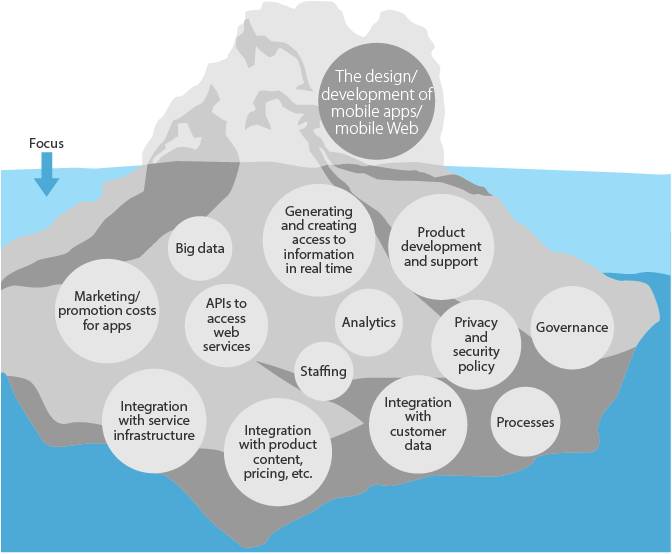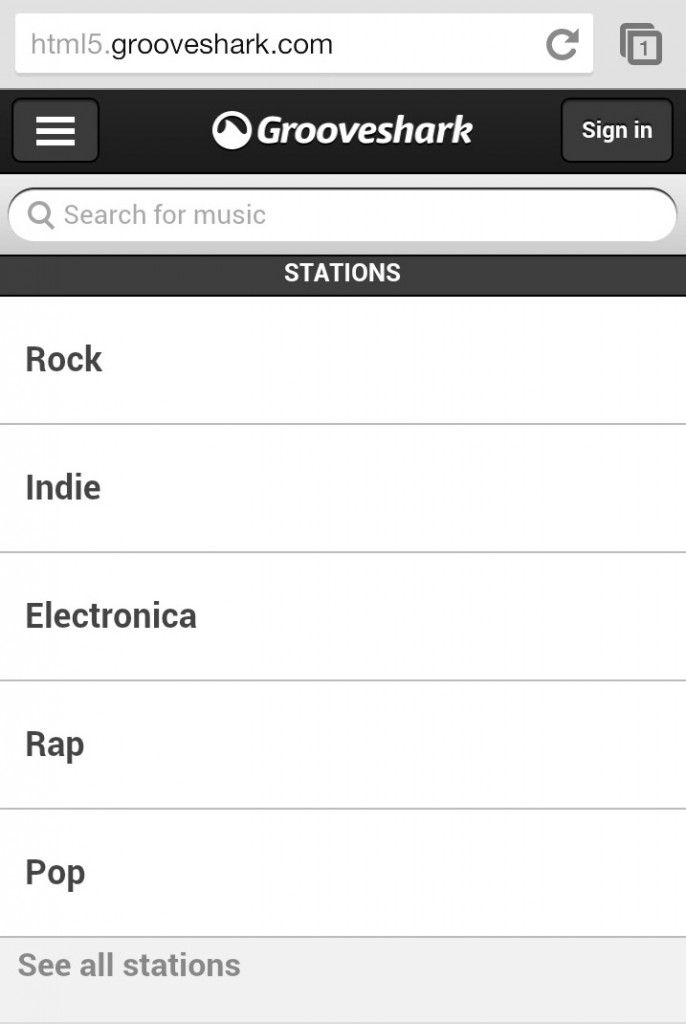When the iPad debuted three years ago, Charlie Rose noted that the most interesting thing about it was the app marketplace, which gave people access to a world they could never have previously imagined.
Rose wasn’t wrong. We now have over a million apps that allow us to take pictures, watch movies, read books, play games, go shopping and conduct business all on one device. In 2012, mobile platforms generated $30 billion dollars worldwide. This includes revenue earned from paid apps, microtransactions, and advertisements served in-app.
Mobile apps as a standalone venture
Do most apps succeed? As a standalone business, the answer is undoubtedly, “No.” Google and Apple give their own in-house apps the highest amount of exposure in their respective marketplaces. For everyone else, it’s a zero-sum game. For example, if someone is willing to pay for one fitness app, they’re unlikely to pay for its competitor as well. Meanwhile, the top ten independent apps earn millions of dollars for its developers. However, the majority of second tier apps earn some money, (thought not enough to sustain a business), and the rest leave their developers high and dry.
Mainstream media outlets often tout headline stories like 17 year old wunderkind Nick D’Aloisio selling his Summly app to Yahoo for an estimated $30 million and Finnish game publisher Supercell generating millions of dollars everyday through its mobile games.
But for every success story there are thousands of entrepreneurs who crash and burn with their mobile offerings. Additionally, independent software developers are at the mercy of app marketplaces like the App Store and Google Play who require their stamp of approval on every app before allowing it in their mobile stores. Adding injury to insult, Apple and Google don’t hesitate to pull “problematic” apps from their platforms, often for arbitrary reasons, which effectively kills any chance these apps may have had for success.
If an app somehow manages to earn a spot into one of these stores, it’s competing with thousands of competitors who offer their apps for little to no charge. Of course, if the app manages to climb to the top of the lists and users start downloading paid versions, there’s always the 30 percent commission to shell out to the hosts for each paid download or in-app purchase.
In short, the proceeds from a standalone app are rarely worth the time necessary to develop and bring it to market.
Mobile apps as a supplemental offering
It’s different for companies that already produce a viable on-premise or SaaS solution. Mobile apps are not their core offering and therefore are not a make-it or break-it proposition. But smartphone and tablet adoption is growing significantly in both mature and emerging markets, especially with younger demographics. Because of this evolution, mobile apps can play an important role in advancing a company’s value today and tomorrow.
In order to capitalize on the mobile market, software vendors must understand their target audience. It’s clear that users like free apps. And that’s okay. Companies can use free apps to increase exposure and grow their user base.
Some apps have a broad appeal and can be used to generate profit. With strategic marketing, these apps can be priced low because they will attract a large following willing to submit payment for them.
Then there are the premium niche apps. These won’t attract a large following, so they must occupy a higher price point in order to generate profitable revenue.
There are three main ways for vendors to extract monetary value from their apps:
- Paid downloads
- In-app purchases like virtual goods or additional features
- Serving ads
However, none of this factors in the costs of creating, marketing, and sustaining an app. The Forrester graphic below illustrates the hidden, but primary issues that accompany mobile app development, the least of which is designing the app.

Mobile app vs mobile site
There is another way to tap into the mobile market. After Grooveshark was removed from the Android market for the umpteenth time, they decided to stop trying to win at someone else’s game. Like Captain Kirk with the Kobayashi Maru, Grooveshark decided to change the rules. Instead of offering a third-party app on someone else’s platform, they built an HTML5 site that mimicked the functionality of their original Android app. Now users can still enjoy access to this software on their mobile devices just by pointing their browser to html5.grooveshark.com.

For software companies that don’t want to depend on the approval process or the fees associated with selling apps through the App Store or Google Play (or Amazon Appstore or Windows Phone Store) an HTML5 site might be the right direction to go in. Since access to the software doesn’t reside on the mobile hardware itself, users can simply bookmark the site on their browsers or create a shortcut on their interface.
The Life stages of the software industry
Here are the life stages of the software industry: On-premise software is a mature technology. SaaS is in its adolescent stage. Mobile is an infant and wearable is incubating. Focusing on mobile, when smartphones and tablets began to proliferate, the experts said that mobile computing was good for consumption but not for production. In other words, you couldn’t get any work done from your iPhone. As technology evolves so does the business case for mobile apps, even for enterprise software. Just make sure to proceed with an understanding of the costs involved.
Keystone
Combined with an on-premise or SaaS product, a mobile app could differentiate you from your competitors, create a unique value for your customers, generate more users and revenue and reduce customer churn.